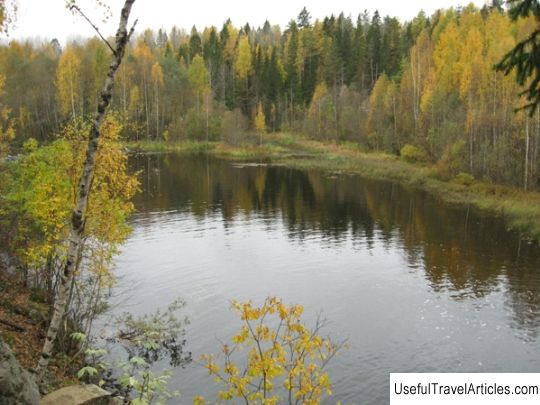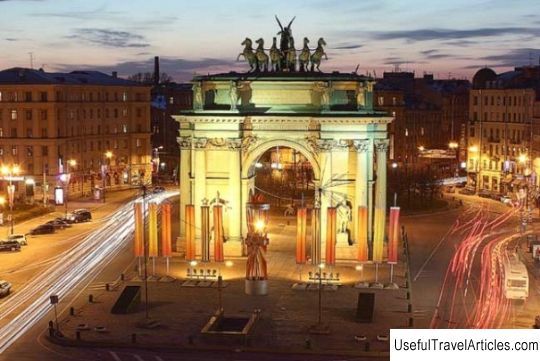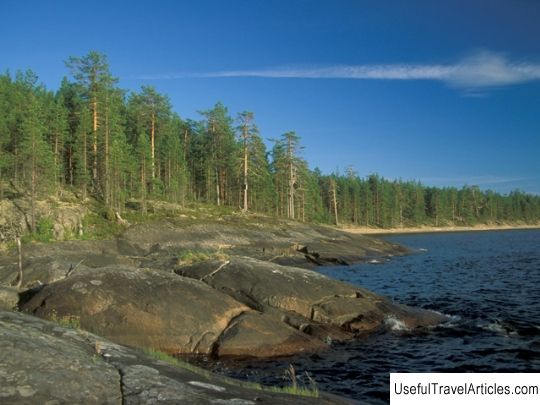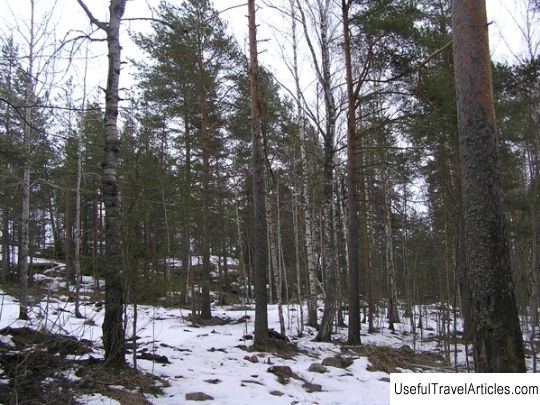Cultural and historical center ”Pegrema” description and photos - Russia - Karelia: Kondopozhsky district
Rating: 8,5/10 (3523 votes) 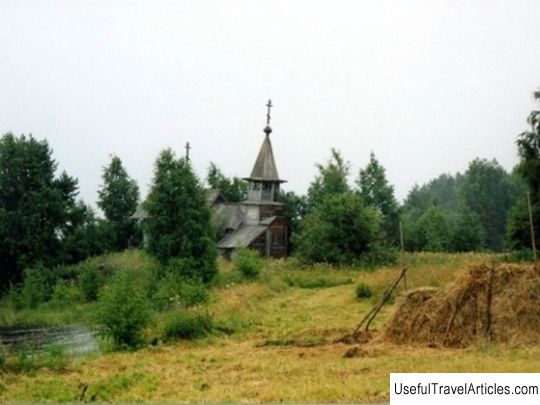
Cultural and Historical Center "Pegrema" description and photos - Russia - Karelia: Kondopozhsky District. Detailed information about the attraction. Description, photos and a map showing the nearest significant objects. Photo and descriptionOne of the most popular attractions of Lake Onega - Pegrema - the most mysterious village in Karelia. It is located on the shore of the Unitskaya Bay in the west of the Zaonezhsky Peninsula, at a fairly large distance from the shore of Lake Onega. This is a whole cultural and historical complex, it is located near the village of Pegrema, only one and a half kilometers. It is surrounded by a picturesque pine forest. There are special natural, climatic and soil conditions, thanks to which the nature in this corner has been preserved in its pristine diversity, both of the animal and plant world. Traces of ancient culture and spiritual life of the population of the Zaonezh region have also been preserved. Therefore, without exaggeration, Pegrema can be called the pearl of Zaonezhie. For the first time, the archaeologist scientist A.P. Zhuravlev drew attention to the monuments of Pegrema in 1985. A random event helped make this discovery. Near the village of Pegrema, as a result of a forest fire, an area of undergrowth was locally burned out. Thanks to this, an unusual sight was revealed to archaeologists: in a small area there were many boulder stones, many of which had a zoomorphic shape and traces of rough processing. Stonework and patches of ocher sand were visible in places on the exposed soil. In 1991-1994, more in-depth studies of this complex began. Its total area is about 20 thousand square meters. m, hundreds of monuments from different centuries were discovered on it. One of the most ancient is a unique cult monument of the 3rd - 2nd millennium BC. Concentrating on a small area of boulder-stones, similar to human figures, or on the figures of animals, suggests that they are elements of the religious rituals of ancient people. These beliefs included the worship of the souls of the dead and stone idols. Very interesting are the stone statues made up of several huge parts. They clearly discern the shapes of the lower part of the woman's body, the human skull. A lot of finds were made on the territory of the complex in the form of ancient burials, both single graves and group ones. Burials of people of the Upper Paleolithic usually include ritual practice; tools, stone knives, jewelry, ceramics, and coals were found in the graves with the deceased. It was found that the burials were covered with red ocher. Obviously, at this time, ideas about the afterlife arise. It is likely that the purpose of coloring the body in the color of blood was to give it the strength of life, energy. Monuments-megaliths in Pegrem are diverse: there are made up of several parts, stacked on top of each other, there are some vertically located, there are simply stacked in a heap. But there are more complex shapes. Unusual, for example, boulders arranged in the form of a snail, perhaps they were amulet circles. There is in the complex the figure of a huge frog, the worship of which in ancient times was associated with the cult of fertility. A figure was discovered in Pegrem, called by archaeologists "a grouse", its length is 1.8 m, width 1.05 m and height 0.65 m. The ancient inhabitants of Zaonezhia deified the image of a waterfowl, and it was central to their worldview. Therefore, it is not surprising that a duck figure was found among the stone figures. It consists of two stones, stacked on top of each other; a beak 12 cm long and a tail 70 cm in length are clearly visible. This monument stands out significantly from others and is perfectly visible at a great distance. Pegrema is a unique monument, because only here, unlike other cult finds in Karelia, was a cultural layer discovered by archaeologists, which has not been preserved in others places. The cultural and historical center in Pegrem awakens interest in studying the traditions of ancient cultures, contributes to the development of tourism in this region.      We also recommend reading Nis Fortress description and photos - Serbia: Nis Topic: Cultural and historical center ”Pegrema” description and photos - Russia - Karelia: Kondopozhsky district. |
